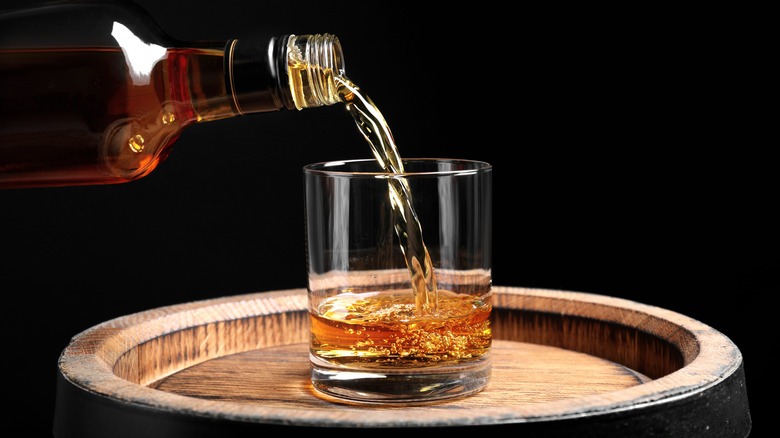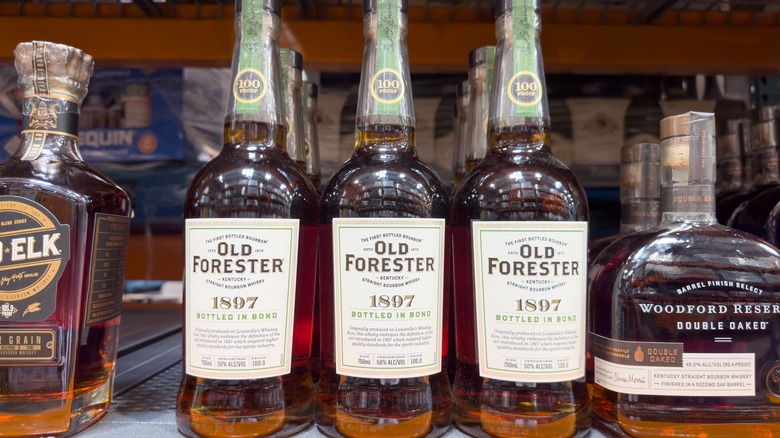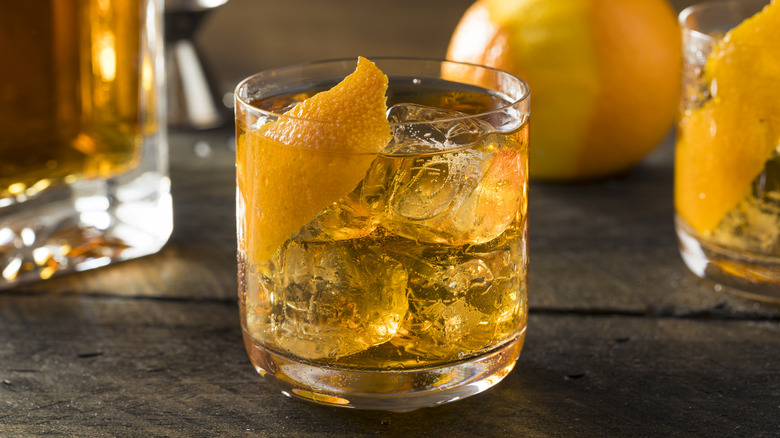What Is Bonded Whiskey, And Is It Worth The Price Tag?
When it comes to alcoholic drinks such as wine, you may have noticed several terms on bottles that denote the drink's origins, authenticity, and how it was made; think AOC (Appellation d'Origine Contrôlée, meaning controlled destination of origin) for French wines, or DOC (Denominazione di Origine Controllata) for Italian. With whiskey, the description denoting a similar kind of authenticity is bonded, or bottled-in-bond. You may have seen it on a few bottles. But what does it actually mean, and why is it sometimes more expensive?
Back in the 19th century, whiskey was a much less regulated drink than it is today. Sold in barrels rather than sealed bottles, it was easier to taint by less scrupulous sellers, and in some cases, it wasn't even really whiskey as we know it, but more like a grain spirit with added flavorings, coloring to mimic the signature brown color of whiskey, or chemicals. This meant anything from caramel or tobacco to turpentine, gasoline, or even formaldehyde could be added.
To crack down on this potential danger, US Congress passed the Bottled-in-Bond Act in 1897. It meant that to gain the official stamp, the liquor would have to be aged for at least four years in a federally bonded warehouse — where it could not be tampered with. And it had to fulfill several other criteria, too, to guarantee its authenticity and provenance.
Strict regulations meant a higher price and better quality
Whiskey that was bottled-in-bond under the 1897 act had to be produced by just one distiller, within a single distilling season in the calendar year. And having been aged for a minimum of four years in a secure warehouse, it had to be bottled at 100 proof, which equates to 50% alcohol by volume, meaning less water could be added during the process.
These regulations meant that making the whiskey was a pricier endeavor than it had been previously. But it also meant that drinkers were getting a better quality product. They knew exactly where the whiskey had come from, and what was actually in the bottle they were going to drink.
Today, as customers increasingly look for transparency when it comes to labeling and provenance, the term bonded or bottled-in-bond still denotes a similar sense of quality, as well as authenticity. And while they might be more expensive to make, the prices are not necessarily prohibitive for consumers. Bonded whiskey can still offer great value bourbons compared with bottles from some newer or smaller-batch craft distilleries — though you might not always find them on the bottom shelf so much anymore. And as well as being seen as more authentic, some whiskey lovers also simply appreciate the taste that comes from a stronger bonded whiskey.
Higher proof and aging means better whiskey cocktails
A proof of 50% ABV when bottled means bonded whiskey has been less diluted with water during the distillation process than some whiskies. Plus, it must be aged for at least four years under the regulations. And for some discerning drinkers, that extra strength and guaranteed time spent aging equates to a greater depth of flavor.
A bolder taste means that bottled-in-bond whiskey is particularly well-suited to cocktails, especially for drinkers who favor a libation with savory rather than sweet notes. With its extra punch of strength and flavor, a bonded whiskey can become the star of a cocktail, rather than being overpowered by other heavily flavored additions such as liqueurs, as is sometimes the case with lower-proof, less-aged whiskey.
It's not just whiskey that can be labeled bonded; you may also occasionally see the term on spirits such as rum or brandy. But if you're looking for a whiskey where you know exactly where it has come from (meaning where it was distilled, not just produced or bottled) as well as something full of flavor, then bonded can offer great value. Plus, you know exactly what you're getting in the bottle.



